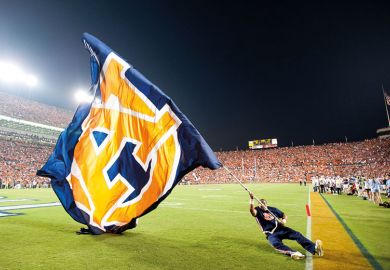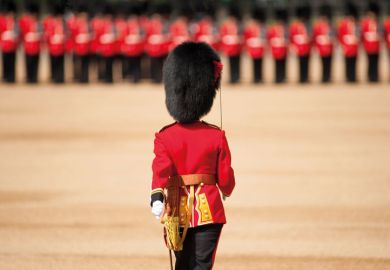US military veterans – and the political value that comes along with them – have emerged as the group with perhaps the biggest stakes in the renewed federal battle over the future of for-profit colleges.
For all the partisanship in Washington, both major US political parties want to be seen helping service members succeed in college and beyond. A major moment came in 2017 when Congress unanimously approved the Forever GI Bill, expanding bursaries and stipends and removing their expiration date. Last month, Congress passed more legislation to help fix some of its implementation problems.
“In this moment in time, things are going fairly well” for students with military backgrounds, said Tanya Ang, vice-president of Veterans Education Success, an advocacy group to help military veterans in higher education.
Yet a partisan split hovers over one of the most important topics facing student-soldiers: their heavy use of for-profit institutions that have often been found to be providing substandard education at inflated costs.
The Obama administration cracked down heavily on such institutions, pushing Congress to impose new accountability rules that forced many of them out of business. The Trump administration and many congressional Republicans, however, have been working to reverse those rules, potentially reviving the for-profit sector.
The reasons that many service members choose for-profit colleges are complex, Ms Ang said, often centring around the apparent convenience of online formats and the heavy marketing promoting them to veterans.
For-profit institutions habitually seek such students because federal law requires colleges to obtain no more than 90 per cent of their revenue from federal student aid money. GI Bill money is hugely attractive to for-profit colleges – which often come close to violating that limit – because GI Bill benefits do not count towards the 90 per cent.
“These predatory schools really do prey on military-connected students,” Ms Ang said, “because they would meet that other 10 per cent.”
And while students with military backgrounds graduate from college at similar rates to non-military students – roughly 55 per cent – they fare much worse at for-profit colleges.
Figures compiled by Student Veterans of America show that for-profit institutions enrol 27 per cent of students using GI Bill benefits and collect about 40 per cent of all GI Bill funding, yet account for only 19 per cent of their total degree completions.
Veterans have had to cope with low-quality and predatory educational vendors since the first version of the GI Bill was enacted at the end of the Second World War. Back then, according to a report issued last month by the policy study group New America, the favoured mode for extracting GI Bill benefits was correspondence courses, and completion rates were also about 20 per cent.
After a federal crackdown helped to stem the problem, New America reported, another round of abuses arose in the 1970s following the creation of federally subsidised student loans.
In the current predatory environment, however, soldiers and veterans seeking a college education have good alternatives. The GI Bill is generous, generally covering the cost of tuition at any public college, or a similar amount at a private college.
Most student-soldiers do choose public colleges, Ms Ang said. For veterans, she said, it’s a highly attractive benefit at a time of rising student debt. And, more recently, a growing number of highly regarded private colleges are taking steps to welcome veteran enrolments.
Columbia University, rare among Ivy League institutions, is a longtime leader in that realm. Many others – including the University of Chicago, the University of Virginia, Vassar College and Wesleyan University – have been using initiatives such as the Posse Veterans Program to provide mentoring and other services designed to help service members succeed.
But too many service members, Ms Ang said, still don’t understand the consequences of choosing a for-profit institution. Much of that stems from family inexperience, she said, given that about 60 per cent of students with military backgrounds are first-generation college students, or come from a low-income, minority, or other underserved population background.
When choosing colleges, Ms Ang said, “they believe that all schools are created equal – they don’t always understand what to look for in an institution”. And given that a large majority of those choosing a for-profit college leave without a degree, policy choices being made in Washington to boost for-profit options could exacerbate their troubles, she said.
Along with reversing the Obama-era crackdown on for-profit colleges, the Trump administration has moved to weaken the Consumer Financial Protection Bureau, which handled thousands of service member complaints about debt collection abuses.
The current administration is “trying to pretty much get rid of any sort of protection surrounding students in general”, Ms Ang said. “Once that’s gone, we’re going to be back in a place where the [for-profit] schools are a little more rampant.”
POSTSCRIPT:
Print headline: Military veterans in middle of US fight over for-profits
Register to continue
Why register?
- Registration is free and only takes a moment
- Once registered, you can read 3 articles a month
- Sign up for our newsletter
Subscribe
Or subscribe for unlimited access to:
- Unlimited access to news, views, insights & reviews
- Digital editions
- Digital access to THE’s university and college rankings analysis
Already registered or a current subscriber?







